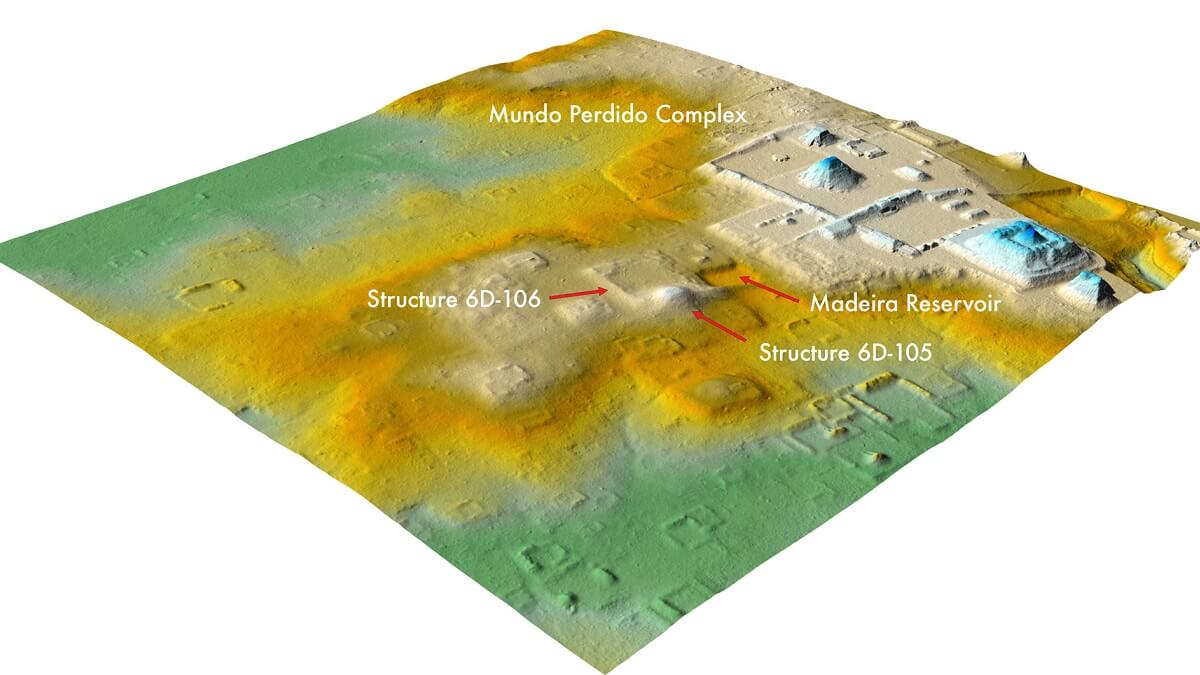Anthropology
Related: About this forumUncovering the secrets of an ancient Mayan city
28 September 2021
/Deborah Devis
New discovery further reveals the connections between the Mesoamerican cities of Teotihuacan and Tikal.

A recent lidar analysis revealed that an area once assumed to be natural hills (centre) near Tikal's Lost World complex (right) is actually an 1,800-year-old ruined citadel. Credit: Thomas Garrison/PACUNAM
Archaeologists and researchers decoding the secrets of one of the most magnificent ruins of the Mayan empire – the ancient city of Tikal – have made a ground-breaking discovery that potentially rewrites our understanding of interactions in the ancient Americas.
Tikal, in the north of modern-day Guatemala, has been extensively studied since at least the 1950s. The sprawling city – which itself covers 400 hectares – is the crowning jewel of 570 square-kilometre Tikal National Park, a lush region of tropical forests and wetlands that sequesters potentially thousands of archaeological ruins within its borders.
A major political and cultural centre for the ancient Maya, Tikal is one of the best understood and most deeply studied archaeological sites in the world. So it came as a surprise when researchers engaged in the Pacunam Lidar Initiaive, a research consortium using light detection and ranging software (lidar) to image the surface of the Earth, made a startling new discovery about the city.
Just a short walk from the centre of Tikal, in an area previously thought to be natural hills, the team discovered a neighbourhood of ruined buildings built in the style of Teotihuacan, the largest and most powerful city in the ancient Americas, more than 1000km away in modern-day Mexico.
More:
https://cosmosmagazine.com/history/civilisations/uncovering-the-secrets-of-an-ancient-mayan-city/
Judi Lynn
(162,384 posts)Date:
September 28, 2021
Source:
Brown University
Scientists have been excavating the ruins of Tikal, an ancient Maya city in modern-day Guatemala, since the 1950s -- and thanks to those many decades spent documenting details of every structure and cataloguing each excavated item, Tikal has become one of the best understood and most thoroughly studied archaeological sites in the world.
But a startling recent discovery by the Pacunam Lidar Initiative, a research consortium involving a Brown University anthropologist, has ancient Mesoamerican scholars across the globe wondering whether they know Tikal as well as they think.
Using light detection and ranging software, or lidar, Stephen Houston, a professor of anthropology at Brown University, and Thomas Garrison, an assistant professor of geography at the University of Texas at Austin, discovered that what was long assumed to be an area of natural hills a short walk away from Tikal's center was actually a neighborhood of ruined buildings that had been designed to look like those in Teotihuacan, the largest and most powerful city in the ancient Americas.
Houston said their lidar analysis, coupled with a subsequent excavation by a team of Guatemalan archaeologists led by Edwin Román Ramírez, has prompted new insights on, and big questions about, Teotihuacan's influence on the Maya civilization.
More:
https://www.sciencedaily.com/releases/2021/09/210928075015.htm
sinkingfeeling
(52,993 posts)driver to take you over rough, muddy roads. The 'hotel' had no running water or electricity. There were no guides except local kids, who would point and sell you a bottle of water. We climbed all over the pyramids...there were ladders to reach the tops. Thank goodness my son was with us as he has an uncanny sense of direction or I might still be living with the howler monkeys.